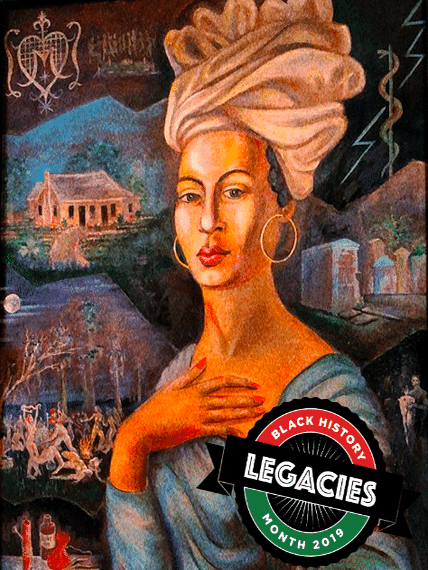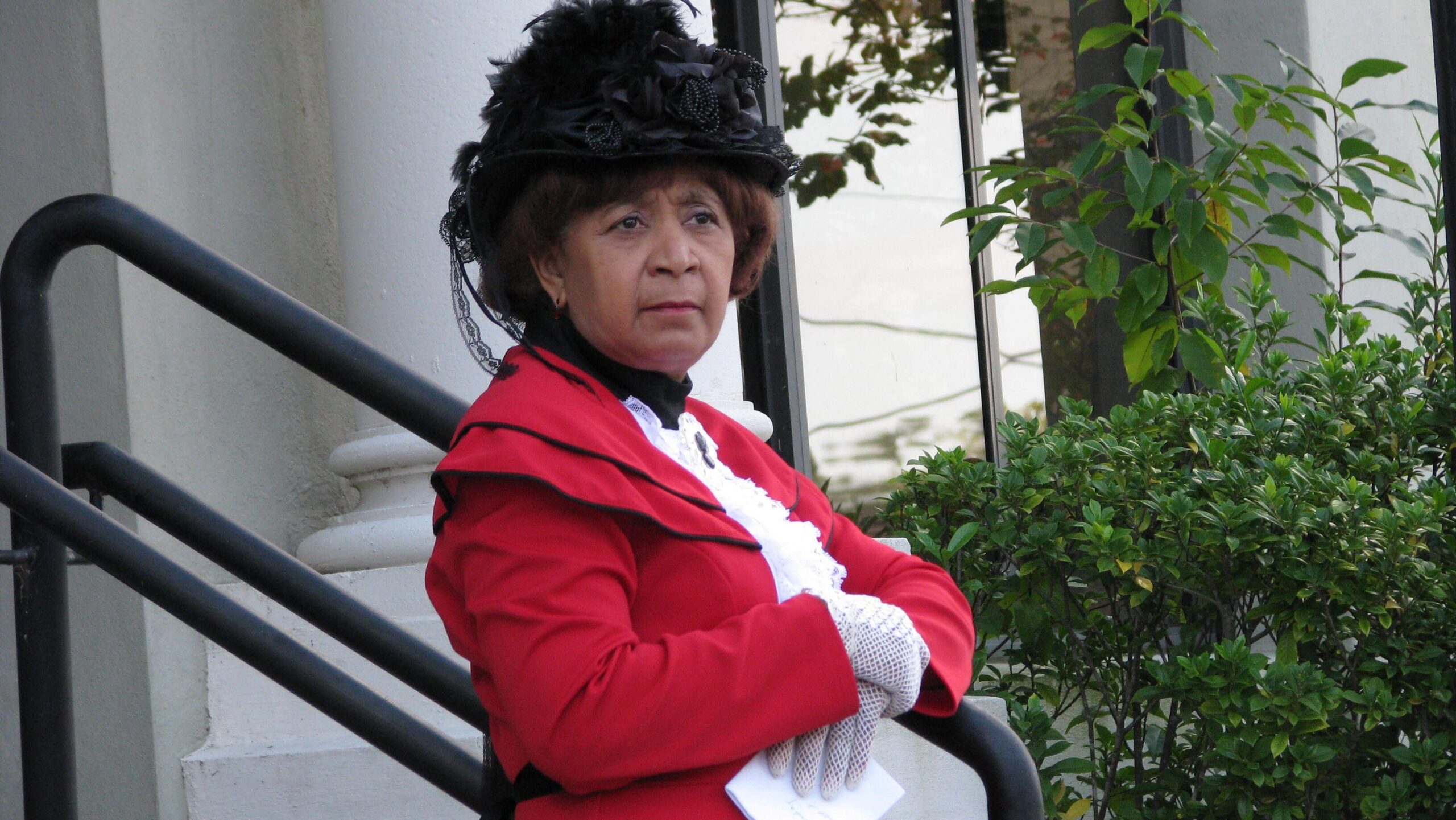Traditionally, the role of women in earlier time periods has been seen as both unimportant and powerless. Across most historical texts and references, one will not find the role of women to be prominent in years before the 1900s. That being said, New Orleans represents an outlier to the idea of the “submissive” or “unimportant” woman in the 1800s. A look into historical texts and The New Orleans Times-Picayune from 1841 highlights the role of women in New Orleans as not only an important one but one characterized by power and respect. The fact that women had an evolved, respected position in New Orleanian society in 1841 reveals the uniquely progressive role of the matriarch in New Orleans society during the 1800s. Furthermore, the uniquely progressive gender climate of New Orleans during 1841 observes women in a position of power in society.
In the years surrounding 1841, most women in American society were seen as domestic, supporting figures to their male counterparts. Jane Johnson Lewis of the online publication ThoughtCo., gives a detailed account of the general role of women in the mid-1800s, revealing they were expected to educate the youth and be good citizens. Additionally, women were considered inferior to men because they were not included in the public sphere. Essentially, women were discouraged from socialization that extended past their immediate children and husbands. Their exclusion from the public sphere left women without participation or opinion in law-making affairs like voting and social affairs like town halls. Via the account of Johnson Lewis, we can understand the basis of the role of the majority of women in America surrounding 1841 was the following: limited, domestic, and submissive to their male counterparts.

The role of women in New Orleans in 1841 represents the opposite of their role in the rest of America. The New Orleans public sphere consisted of men and women alike, and even included many wealthy and powerful matriarchs who held more power than men in New Orleans society. Many women, such as Marie Simien, were the heiresses to large estates and wealth, allowing them to rise to the top of the social circle in New Orleans. Additionally, people in New Orleans at this time not only valued but relied on women for many jobs, further elevating their position in society and displaying a rare case of female power in an 1841 society.
The Times-Picayune serves as a key source in revealing the progressive view of women in New Orleans. There is a section in the newspaper where people may post “needs”. Most of these posts come from individuals seeking someone to complete a service for them. Many of them specifically request the services of a woman. For example, on May 12, 1841, the following “need” was posted:
“Wanted: The members on the board of trustees for the Springfield Institute seek a female teacher. To a person willing to accept a moderate salary, and taking a situation in a beautiful country village, please call Warren G Huie at No. 65 Poydras St” (Times-Picayune).
Here, we see that a school board, headed by a male, is requesting a female teacher to teach at a high-level institute. We are exposed to the fact that New Orleanian society adapted to the idea that women are well suited to many jobs and should be compensated accordingly. In the same edition of the Times-Picayune from May 12, 1841, another “need” specifies the desire for a woman’s services. The second post asked for a French lady, in the establishment of Madame Denny Aux to organize an estate schedule. Once again, we see an example of women being valued and needed in society to participate in the working class. This progressed the role of women in America, as this was occurring at a time when women were denied from participating in the working class because society believed they were unable to complete tasks as efficiently as men.
Another fascinating aspect of 1841 New Orleans is the existence of extremely wealthy and prominent women in society. Many women in New Orleans inherited massive amounts of wealth from male family members who passed away, differing from the rest of the country, which restricted widowed women from accessing an inheritance. Carola Hartley of The Daily Advertiser details that women in New Orleans were governed by French Civil Law, which gave them a system of community property, enabling them to have more rights than women living elsewhere. Harley adds that Louisiana women, including women of color, had the right to own property separate from their husbands, revealing once more that New Orleans possessed a uniquely progressive and inclusive role of women in 1841.
In the piece referenced previously, Parlons Opelousas: The Role Marie Magdalena Esprit/Lemelle Simien Played in St. Landry Parish by Carola Lillie Hartley, we are supplied with a prime example of a powerful and needed member of society through New Orleans matriarch Marie Simien. Marie was married to a wealthy plantation and estate owner in New Orleans named Antoine Simien. According to Harley, in the 1800s, Marie became the executor of Antoine’s will, and she took over their estate and all other property and business interests when he died on June 28, 1811. Marie Simien’s ability to inherit her husband’s wealth and take complete control of his assets reveals women in New Orleans were valued more than women in the rest of America. The story of Marie Simien is further detailed in the LSU Libraries journal piece on Free People of Color in Louisiana. From this piece, we learn that Marie Simien owned around a dozen slaves and 7,500 acres of land, including 1,400 acres of farmland. Additionally, the piece revealed that at the time, there were many white men who were less wealthy than powerful females in society. The case of Marie Simien employs us with a female matriarch who represents the progression of the role of women that existed in the greater New Orleans area, and she is just one of many who were in similar positions.

New Orleans has always represented a special part of our country. Whether it be the music, food, or culture in general – New Orleans has been known as a place of the unique. The role of women in 1841 New Orleans only furthers the idea that NOLA is a unique and progressive place. Women in New Orleans society during 1841 may be seen as both progressive and eccentric, as they were respected and valued in ways that other American women were not at the time. Additionally, women in New Orleans were enabled with abilities that other women were just beginning to fight for. New Orleans during 1841 represented a progressive state because women were treated quite similarly to men, and given the same financial and social capabilities. Female matriarchs in the New Orleans public sphere were seen more on par with what women evolved to be in today’s world: valued, important, and needed.
This piece was edited by Anna Blavatnik as part of Professor Kelley Crawford’s Digital Civic Engagement course at Tulane University.
 NOLAbeings Multimedia artist Claire Bangser created NOLAbeings as a portrait-based story project that marries...
NOLAbeings Multimedia artist Claire Bangser created NOLAbeings as a portrait-based story project that marries...  Voodoo in New Orleans: Reviving history: New Orleans fortune telling This article takes a deep dive into the history of Voodoo in New Orleans, its hybridization with Catholicism, and its present-day place in the city's culture. The author visits fortune-tellers in the French Quarter, using their guidance as a tool for introspection rather than a deterministic predictor of the future. Through her experiences in New Orleans, the author feels a mystical connection to both the past and the future.
Voodoo in New Orleans: Reviving history: New Orleans fortune telling This article takes a deep dive into the history of Voodoo in New Orleans, its hybridization with Catholicism, and its present-day place in the city's culture. The author visits fortune-tellers in the French Quarter, using their guidance as a tool for introspection rather than a deterministic predictor of the future. Through her experiences in New Orleans, the author feels a mystical connection to both the past and the future. 